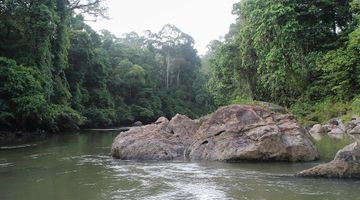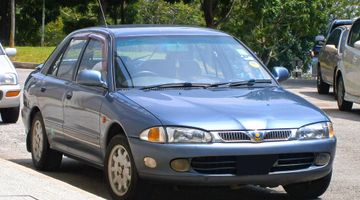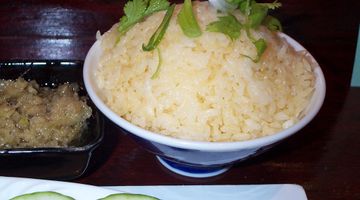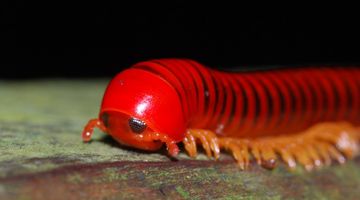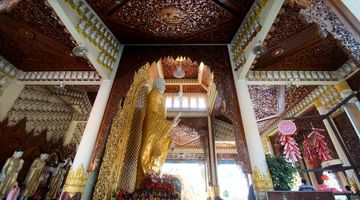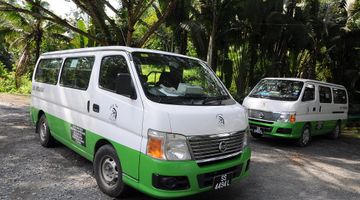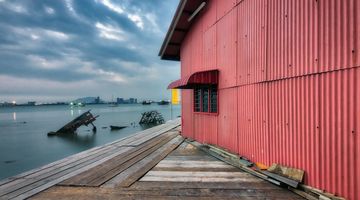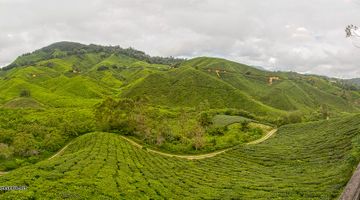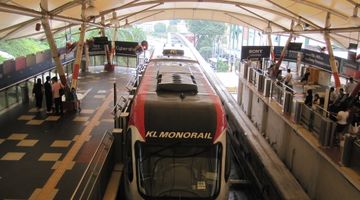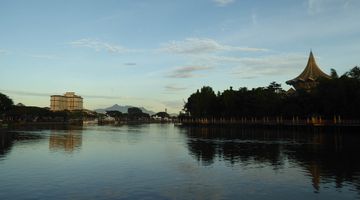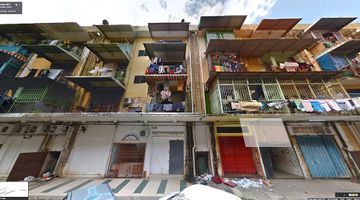Tea culture in Malaysia – Travel & Drink Tea!
Malaysia doesn’t have a prominent tea culture compared to other destinations around the world. But it doesn’t mean you won’t be able to drink delicious locally produced tea in cafés, restaurants and tea houses. Here are the essentials of tea culture in Malaysia including the history, types, best places to visit and the differences between western and eastern parts of the country.
Tea culture in Malaysia
As a multicultural nation, tea in Malaysia is enjoyed differently by the Malays, Chinese and Indians. If you go to a regular coffee shop or restaurant, a cup (or glass will either come as Chinese, milk or strong tea served with or without sugar. The inexpensive drinks can be served either hot or with ice and often ordered with a meal.
Teh tarik and Chinese tea are by far the most famous types of tea in Malaysia. Both are cheap and widely available in most coffee shops and restaurants around West and East Malaysia. Chinese tea are most common in Chinese establishments. If you look at tea consumption, locals drink large volumes of these types.
Teh Tarik
Teh tarik, or ‘pulled tea’ in English, is a favourite people often drink when they’re sitting around with their friends or while relaxing. Historically, Indian Muslim immigrants working on rubber plantations brought this style of tea drinking to Malaysia after World War Two. They later began to sell along the streets making it the popular drink it is today. All ethnic groups regularly enjoy teh tarik on a daily basis. Preparation involves pouring sweetened condense milk and evaporated milk into a flavoursome black tea before pouring the contents from one cup to another. Pouring creates a creamy foam and helps cool the liquid. And the thicker the froth, the better the taste. Almost every restaurant, coffee shop and food court in Malaysia serves teh tarik, which is a must-try traditional Malaysian drink and a favourite with many tourists. This is a significant part of tea culture in Malaysia with various competitions for pourers to show off their skills by demonstrating different techniques and throwing the milk high into the air.
Chinese tea
The Chinese, on the other hand, tend to enjoy their drinks more traditionally by boiling leaves in a pot and serving in small cups. Some Chinese restaurants serve it in big glasses and enjoyed together with meals. There are lots of different flavours and types available in Chinese tea shops. You’ll find the drinking culture to be different from the western way of sipping a cup with cakes and biscuits. Local Chinese often drink herbal infusions for their health benefits. You won't typically see Malays, Indians and the indigenous people of Sabah and Sarawak have a traditional 'tea session'. Instead, they often drink the Malaysian way, which involves cheap tea in a restaurants or coffee shops with a meal.
Famous Malaysian tea brands
The three leading brands of Malaysian tea include BOH, Cameron Valley and Sabah Tea. The first two originate in West Malaysia in the prime tea growing region of Cameron Highlands. The second comes from East Malaysia. You can buy most brands in supermarkets around the country with BOH and Cameron Valley being more available in Kuala Lumpur and Sabah Tea in Eastern parts of the country.
Tea in West Malaysia
Today, there are two main tea growing regions in Malaysia. Cameron Highlands in Pahang and Sabah’s Ranau.
West Malaysia’s tea drinking culture has its origins in the British colonial days. Tea was and still plays a huge role in British culture. The colonialists found it expensive and time-consuming to import it in the amounts they wanted from India. So, in 1929, a British businessman began cultivation in the Cameron Highlands, which became the most important tea region in Malaysia producing BOH and Cameron Valley. BOH is the biggest tea producer in Malaysia. On average, their plantations harvest more than 4000 tons annually making up to 70% of the country’s tea.
Cameron Highlands
Cameron Highlands is one of the main tourist areas in West Malaysia that’s about three hours from Kuala Lumpur. Tourists can either join a tour, rent a car and self-drive or take the bus from Kuala Lumpur. If you want to drive, you’ll find highways leading to Pahang but steep and narrow mountain routes to reach the highlands. Tanah Rata, the main town in Cameron Highlands, is the most popular place to stay. You can find budget hotels, homestays, guesthouses and luxurious five-star retreats in and around the region. The higher-end ones are a few kilometres from the town. Both BOH Tea Plantation and Cameron Valley are within 10 kilometres (6.2 miles) of each other. You can visit both on the same day. Either join a tour in Cameron Highlands or hire a taxi from Tanah Rata.
The BOH Tea Plantation
BOH is Malaysia’s most famous black tea brand costing approximately $5 per 100 grams. All leaves come from different species of plant and get carefully harvested and processed to create the various characteristic flavours and aromas. Cameron Gold Blend is slightly cheaper costing about $4 for 150 grams whereas the flavoured bags come in a box of 20 for $3.30.
You can buy other instant tea mixes including vanilla and caramel from most supermarkets around Malaysia. There are also a range of different flavours including strawberry raspberry, passion fruit orange, jasmine green tea, peppermint and lemon myrtle infused. All are available at most supermarkets in and around Kuala Lumpur for around $3 for a box. If you want to sample one of the best BOH teas, the jasmine green tea comes highly recommended.
Cameron Valley
Cameron Valley, also known as Bharat Tea Estate, produces a range of tea from white, green, favoured and herbal infusions along with the Cameron Valley Premium Gold. The flavoured are favourites for their taste and price tag costing less than $3 for 25 bags. Herbal infusion tea bags cost approximately $5 for 50 grams whereas Cameron Valley Premium ones are $6 for 200 grams.
Tea houses in West Malaysia
Drinking inside a tea house isn’t an everyday activity for the average Malaysian. Tea houses do exist, but most are influenced by the West and use imported teas. Some do serve local such as the ones in the Cameron Highlights where you can drink tea with views of the lush green valley below.
BOH Tea Centre, Sungai Palas
BOH Tea Centre combines a tea shop with tourist facilities to visit the factory and buy souvenirs. The Tea Factory allows visitors to join a 30-minute tour to learn how to make Malaysian tea from picking the leaves to the various traditional methods of processing, sorting and drying. You can join between 9:00 am and 4:30 pm on all days apart from Mondays. The Tea Garden outside overlooks the vast plantations rising in terraces around the valley and serves fresh cups of BOH.
Cameron Valley Tea House
The tea house overlooks the Cameron Valley plantation along the main road heading into Tanah Rata. After opening in 2002, this spot has seen a huge boom in customers, mostly local tourists, to enjoy freshly picked tea, cakes and scones. Visitors often feel the British influence with the design, style and especially climate. You can purchase all types of Cameron Valley tea from the adjoining shops. Admission is free, and you can walk around the tea plantations without a guide.
Tea in East Malaysia
Sabah, in East Malaysia, grows Sabah Tea and compared to West Malaysia, tea production is relatively new dating back to 1973. Tourism isn’t as popular as Cameroon Highlands, but you can still visit Ranau and enjoy fresh tea inside their onsite tea house overlooking the valley and Mount Kinabalu in the background.
Ranau
Sabah Tea’s plantations are in Ranau, a small mountainous town a few hours from the capital, Kota Kinabalu. You can either visit on a day trip or spend the night in the town centre. Most people tend to go to the plantation as a stop on an organised tour of the wider Ranau and Kundasang area. Admission into the grounds is free, but you need to pay extra to visit the factory and have a guide. Some tours from Kota Kinabalu include this; others stop by for a quick photograph.
If you’re in Kota Kinabalu, expect the journey to take around two and half hours to reach Ranau. Rural areas lack highways, and some roads may be prone to flooding or congestion f after a storm in the monsoon season. Some tourists rent a car from the capital and self-drive. Consider this option if you’re familiar with driving in rural Asia as the road quality isn’t as good as West Malaysia. Accommodation is available with a selection of budget and more luxurious options.
For a more traditional experience, Sabah Tea has an adjoining resort where you have the option to stay inside a longhouse, single story bungalows or camp. The prices vary depending on the type of accommodation, season and non-Malaysians have to pay a significantly higher rate than locals.
Sabah Tea (East Malaysia)
Sabah tea comes in many forms and flavours. There are a total of eight variations based on the different ingredients. Some have herbs, spices, lemongrass among other things mixed into the black tea to create herbal infusions. The plain black tea makes a delicious drink too. If you want to try Sabah Tea, you can either buy the leaves ($8 for 50 grams) or a box of 40 tea bags for $5. Visit their website for more information on the different brands and prices.
Tea Houses in East Malaysia: Sabah Tea Garden, Ranau
The Sabah Tea Garden has a picturesque setting surrounded by rainforests overlooking the tea plantation with Mount Kinabalu in the background. Because of the altitude, it offers a respite from the hot and humid temperatures at sea level in Kota Kinabalu. If you do visit, expect to experience a high level of service and sample some of Sabah’s freshest tea. Prices are quite high but worth it for the view and experience.
Malaysia speciality tea
If you go to any restaurant or coffee shop in Malaysia, you’ll have the choice between different kinds of tea. The must-try ones are below:
• Teh Tarik. You can buy this at most Indian restaurants in Malaysia. People drink the tea when it’s hot.
• Teh Ais. A black tea served cold with a handful of ice and sweetened condense milk.
• Teh O ais: A black version of Teh Ais that comes with sugar instead and without the milk.
Conclusion
Malaysia doesn’t have an active tea drinking culture in the same way as other countries. But you can try the drinks in the restaurants like the locals with your meal and buy boxes in the supermarket for later in the day. Or for a richer experience head to some of the tea plantations in either Cameron Highlands or Sabah’s Ranau to learn how it’s made, tour the factory and have a cup overlooking the plantations.


